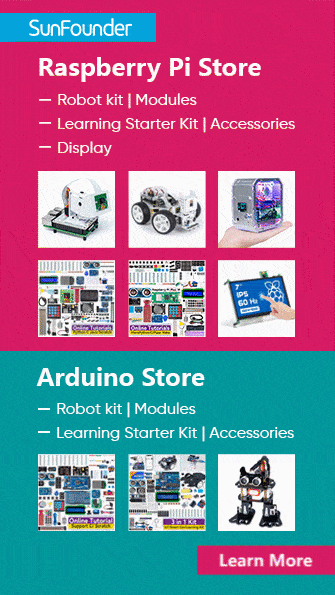How secure are your IoT devices? In today’s interconnected world, ensuring the security of your Internet of Things (IoT) ecosystem is paramount. A bold statement: neglecting proper security measures can lead to catastrophic breaches that compromise sensitive data and operational integrity. As businesses increasingly rely on cloud-based solutions, integrating IoT devices with Amazon Web Services (AWS) Virtual Private Cloud (VPC) has become a necessity. This article delves into how you can securely connect remote IoT devices using Raspberry Pi as a gateway.
Whether you're a seasoned professional or a beginner exploring IoT and cloud computing, understanding the intricacies of setting up a secure connection between your IoT devices and AWS VPC is crucial. The process involves configuring Secure Shell (SSH) access to enable encrypted communication channels. By leveraging Raspberry Pi's versatility, you can establish robust connections that protect your data from unauthorized access. Moreover, SSH plays a pivotal role in facilitating seamless file transfers and remote management capabilities. Let’s explore this further by examining the steps required to achieve such integration effectively.
| Bio Data & Personal Information | Career & Professional Information |
|---|---|
| Name: Arsène-Durando BIBANGA-SONDATOMBI | Occupation: Étudiant Stagiaire |
| Education: EPSI - L'école d'ingénierie informatique | Skills: IoT Security, AWS Configuration, Linux Administration |
| Location: 69190, France | Professional Network: 319 relations on LinkedIn |
| LinkedIn Profile | Specialization: Remote IoT Management Using Raspberry Pi and AWS |
AWS IoT Core guidelines provide a structured framework for managing permissions and policies within the IoT ecosystem. These guidelines are JSON documents adhering to the same conventions as Identity and Access Management (IAM) policies. One significant advantage of AWS IoT Core is its support for named policies, allowing administrators to assign specific permissions to different devices or user groups. This granular control ensures that only authorized entities can interact with your IoT devices, thereby enhancing overall security.
Consider an example where industrial monitoring systems require remote access for maintenance purposes. By implementing a RemoteIoT VPC SSH Raspberry Pi AWS setup, organizations can ensure secure communications while maintaining operational efficiency. The configuration process begins with enabling SSH access on the Raspberry Pi device, followed by establishing a secure tunnel to the AWS VPC environment. This approach not only safeguards sensitive information but also simplifies the management of multiple IoT devices spread across various locations.
Intel Software Guard Extensions (SGX) represents another layer of security enhancement for IoT applications. SGX introduces hardware-based isolation mechanisms that protect enclaves—secure regions of memory—from external interference. Through remote attestation, these enclaves can verify their authenticity and integrity, ensuring that they operate within trusted environments. Such advancements pave the way for innovative use cases, including IoT data trading based on smart contracts, which demand high levels of trust and transparency.
For those unfamiliar with the technical aspects, consider a step-by-step guide to setting up and securing a Linux VM with SSH. Begin by launching a virtual machine instance in the cloud, ensuring it runs a supported Linux distribution. Next, configure firewall rules to restrict inbound traffic to essential ports, such as SSH. Generate strong SSH keys and disable password authentication to mitigate brute-force attacks. Finally, implement additional security measures like two-factor authentication and regular updates to keep your system protected against emerging threats.
Incorporating Raspberry Pi into your IoT infrastructure offers numerous benefits beyond mere connectivity. Its compact size and low power consumption make it ideal for deployment in resource-constrained environments. Additionally, its compatibility with popular programming languages and frameworks enables developers to create sophisticated applications tailored to specific business needs. For instance, combining Raspberry Pi with AWS IoT Core allows for real-time data processing and analytics, empowering organizations to derive actionable insights from their IoT deployments.
To illustrate the practical application of these concepts, imagine a scenario involving smart home automation. By integrating Raspberry Pi with AWS VPC, homeowners can remotely monitor and control connected devices, ranging from lighting systems to climate control units. Leveraging SSH ensures that all interactions occur over encrypted channels, safeguarding personal information from potential eavesdroppers. Furthermore, adherence to AWS IoT Core guidelines guarantees compliance with industry standards, fostering trust among users who prioritize privacy and security.
As technology continues to evolve, so too must our approaches to securing IoT ecosystems. Embracing cutting-edge solutions like OPERA—Open Remote Attestation for Intel's Secure Enclaves—enables us to address emerging challenges proactively. Researchers and practitioners alike contribute valuable insights through platforms like ResearchGate, where findings related to SGX remote attestation and enclave authentication are shared openly. These collaborative efforts drive innovation forward, ultimately benefiting end-users who rely on secure and reliable IoT services.
Returning to our initial question: How secure are your IoT devices? With the knowledge and tools presented herein, you now possess the means to fortify your IoT infrastructure against modern-day threats. From configuring SSH access on Raspberry Pi to implementing AWS IoT Core guidelines, each step contributes toward building a resilient architecture capable of withstanding adversarial attacks. Remember, vigilance remains key in safeguarding your digital assets; stay informed about best practices and continuously adapt to changing threat landscapes.
Finally, remember that security is not a one-time effort but an ongoing commitment. Regular audits, updates, and assessments form the backbone of any successful IoT security strategy. By staying ahead of the curve, you empower yourself—and your organization—to thrive in an increasingly interconnected world. So go forth, apply what you've learned here, and transform your IoT vision into reality!




